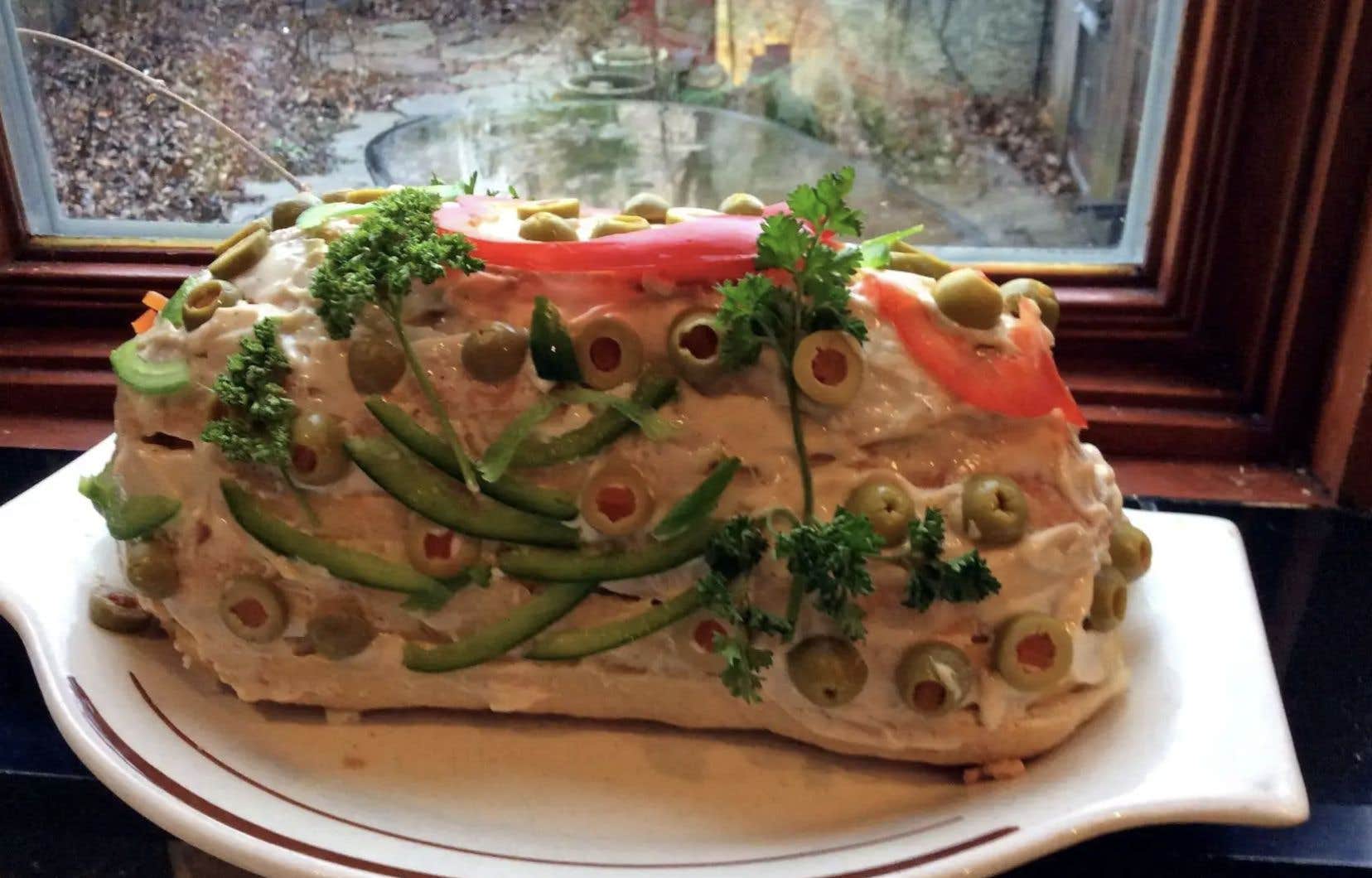The evenings of December 31, which are generally an opportunity to gather with family or friends to welcome the new year at the stroke of midnight, also have their own culinary traditions which differ from one country to another. To inspire you for your next New Year’s Eve, or simply to whet your appetite, here is a selection of typical dishes to discover.
Bulgaria — Banitsa, one of the most emblematic dishes of Bulgarian cuisine, is also prepared as part of rituals specific to December 31. It is a pastry made from phyllo dough, usually filled with yogurt or cheese. It can be sweet or savory, but most banitsa are made with feta cheese and eggs.
“On New Year’s Eve, we prepare a banitsa and insert papers on which we write wishes for the coming year,” explains Radostina Raycheva, a Montreal teacher born in Bulgaria. Dogwood twigs with buds are also “planted” there, and these buds symbolize what the new year will bring. We hang short sentences with wishes on it. The main wishes are about health, luck, love and wealth. »
Haiti — Joumou soup, prepared in Haiti for the New Year, has an eminently political history. You should know that the 1er January is also Haiti’s Independence Day. This soup, made with giraumons (a type of squash), beef, potatoes, vegetables and spices, was once only served to French slave masters on plantations.
However, the 1er January 1804, the consumption of joumou soup was authorized for all, to symbolize the country’s independence and thumb its nose at colonial France. Since December 2021, it has been part of UNESCO’s intangible cultural heritage of humanity.
Mexico — Mexico has its own king cake, the rosca de reyes. “It’s really similar to galettes and French king cakes,” explains Gabriel Saúl, a Montreal musician whose family lives between Mexico and Canada. The one who eats his share of rosca and whoever finds the little ceramic jesus that was slipped inside then has to throw a tamale party and invite everyone he ate it with. »
“It’s become a joke among Mexicans: no one wants to throw a party and cook tamales for twenty people. So we often hear people say: “I swallowed Jesus because I didn’t want to cook”. It’s really a tradition that is done with family or friends, with a large group, because you then have to organize the tamales dinner. »
Tunisia — In Tunisia, couscous is particularly popular for the New Year, whether on December 31 or in summer (variable date), for ras el am el hejri, the first day of the Hijri year. Couscous with dried meat (kaddid) and fish are the most common.
“Fish couscous is a typical Tunisian dish,” says Sana Matboui, a Laval computer scientist born in Tunisia. The majority of our large cities are on the Mediterranean coast. Fish is therefore very important in our culinary traditions. We are also the only country in the Maghreb to make red (spicy) couscous. Tunisia is also well known for makarouna bel salsa, a spicy pasta recipe. In my father’s Amazigh (Berber) family, we eat it with beef, and in my mother’s family, with fish. »
Japan — The Japanese celebrate the transition to the new year with toshikoshi soba, a bowl of buckwheat noodles, on Ōmisoka (New Year’s Eve). The word toshikoshi literally means “passing of the year”, and eating soba on New Year’s Eve is said to start the year with good luck.
Soba has its origins in the Edo period (1603-1867). It is consumed across the country on December 31. Since buckwheat can survive harsh winters, soba is also said to symbolize strength and resilience.
Quebec — For better or worse, our roundup of holiday culinary traditions wouldn’t be complete without the mention of sandwich bread and Quebec aspic. We also devoted an article last year to these unloved dishes, which are regaining popularity, particularly among young people.
“My parents, originally from Saguenay, have lived in the west of Montreal for around thirty years,” says Olivier Maltais, a Montreal cultural worker. Sandwich bread is a tradition at our house, but my mother pointed out to me that my uncle doesn’t make it at home. She told me that she made it, in part, to remember her childhood in Saguenay. Both my grandmothers prepared it for New Year’s Eve when my parents were young. We do it once a year, because it’s good, but it’s also a lot of work, so it’s better to do it in a context of sharing and celebration. »
